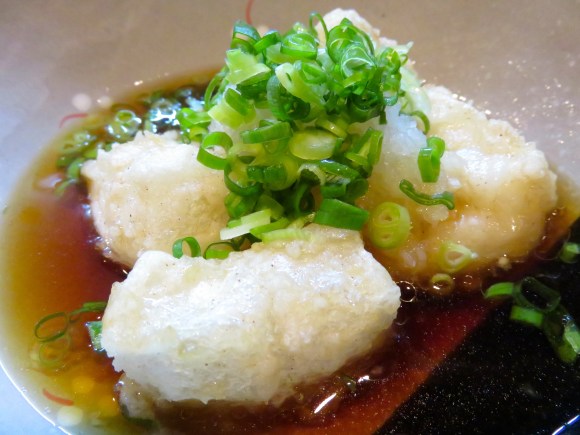
Vegetarians traveling to Japan may find it difficult to find food that fits their dietary lifestyle. Fish seems to be in everything including the soup stock used to make miso soup. To make matters worse, many foods in convenience stores, bakeries or even Starbucks have misleading labels, and that “vegetable sandwich,” or “vegetable pizza” may actually have meat in it too! You can order foods like okonomiyaki or monjayaki with no meat, but you still can’t be sure it won’t come with shredded fish flakes on top that there isn’t fish lurking in the dashi-based sauces.
I always recommend to my vegetarian friends that rather than asking Japanese restaurants to make something special for them, it’s better to just order food that doesn’t have fish or meat (or dairy) in it from the beginning. Fish has always been a staple in the Japanese diet, but the eating of wild and domestic game was banned for over 1,200 years in Japan, and Buddhist tradition gave rise to a special vegetarian cuisine called shojin ryori. Even now, the traditional Buddhist meal called ozen (rice, miso soup, pickles, boiled/simmered vegetables and beans), is still served at funerals in Japan.
So traditionally, there is a lot of vegetarian food in the Japanese diet. You just have to discover it. And RocketNews24 is here to help! In this article we’ll introduce you to common Japanese dishes that can be ordered at almost any Japanese restaurant that have no meat, fish or animal products in them, so, let’s jump into Japanese vegetarianism 101.
Most people in Japan who eat meat also eat lots of vegetarian food–they just don’t realize it! You’ll find the following foods at most izakaya and other typical Japanese restaurants. In addition, just as there are noodle restaurants or yakiniku beef restaurants in Japan, you can also find tofu restaurants, garlic restaurants and potato restaurants focusing on a particular kind of food that happens to be vegetarian. So once you find a vegetarian food you like, if you do a little more research to find places specializing in that particular cuisine, you’ll open up a whole new gastronomic world!
1. Mochi 餅
Mochi, most often found in the form of dense rice cakes, shows up in some okonomiyaki and monjayaki (where it is cut into little rectangles), and it can also be served either grilled (kirimochi) or fried (agedashimochi). It’s a nice warm dish that soothes the belly in the autumn when the days are getting cooler.
▼ Agedashimochi served with grated daikon radish and leeks
2. Eggplant/nasu なす (and other vegetable side dishes)
Eggplant (nasu in Japanese) is often ordered as a side dish at Japanese restaurants. It is served grilled (yakinasu) or baked and flavored with a warm miso sauce (made from soy beans, sea salt, and koji). To me, nobody does eggplant like the Japanese! When cooked properly, it is truly epicurean. Other vegetables served as sides are konyaku (a gelatin type food made with yams), yamaimo potato, and pumpkin. Even raw cabbage leaves are served with salt, and they go well with beer!
Tempura is also a favorite food of vegetarians. In addition to fried vegetables, you can also get herbaceous plants such as shiso leaves and even maple leaves. But be careful because mixed tempura sets typically include shrimp and other fish items.
▼ Nasu dengaku–grilled eggplant with miso
▼ Goats have known for a long time that there’s nothing wrong with eating raw cabbage leaves.
▼ Tempura is a perfect dish to share with your meat-eating friends because there’s a little something for everybody.
Tip: In Tokyo near Shinjuku Station try the Tsunahachi tempura restaurant.
3. Kushimono 串物
Kushimono, or skewered food, is readily available in Japan. Lotus root, mushrooms, green pepper, okra and many other vegetables such as gingko nuts (as well as meats) are served on sticks. Kushiage is the same stuff, but fried, on a stick. Try vegetable croquettes also.
▼ Renkon (lotus root) on a stick. At least you can see exactly what you’re getting.
Tip: There are even kushimono restaurants dedicated to the pleasure of eating off a stick. If you’re in Osaka, try Tenjin Jinja, a kushimono restaurant on Dotonburi street next to the Kani Doraku crab.
4. Pickles/tsukemono 漬物
Tsukemono, pickled vegetables, often come as an accompaniment to a meal. Soaked in brine, tsukemono can be quite salty. If it is soaked in sugar or a combination of vinegar and sugar, it can be mild and almost sweet.
▼ Daikon radish (takuan) and cucumber tsukemono.
▼ Pickled plums, or umeboshi can be served as tsukemono and are also used inside rice balls.
Tip: The purpose of tsukemono is to clean the pallet, balance out the umami flavors in a Japanese meal, and to help balance the meal psychedelically as, according to Japanese haute cuisine, meals are supposed to contain 5 colors: black, red, yellow, green, and white.
5. Daikon 大根
The daikon radish is so versatile it can be served pickled (tsukemono, takuan), boiled (oden), shredded (with sashimi), eaten as a salad (daikon salad). or grated to accompany dipping sauces. Daikon is also the most consumed vegetable in Japan as well as one of the most intelligent.
▼ Grated daikon adds a cool and refreshing touch to many foods.
Tip: Sauces accompany many Japanese foods. If you’re not sure if the sauce has fish in it, ask for a side of soy sauce (made from wheat, soybeans, water and salt) or mirin, made out of sweet rice wine. Be careful with ponzu sauce, a tangy citrus liquid made with rice wine, rice vinegar, and seaweed, but also fish flakes.
6. Beans/mame 豆
Beans (mame) are used in all kinds of Japanese fare, from natto (fermented beans) to edamame (soy beans), kuromame (sweet black beans), and red azuki beans mixed with rice and called sekihan. Sweetened beans can be found in Japanese desserts such as anpan, dorayaki, manjū, monaka, taiyaki and daifuku.
▼ Boiled soy beans are often served as an appetizer in restaurants.
Tip: Be sure to try Japanese soy milk, which I find to be superior to Western brands. Try the Kikkoman brand in a bright green carton, which can be picked up in 200-milliliter (6.8-ounce) one-serving boxes at any Japanese convenience store, made out of nice, biodegradable paper.
7. Nori seaweed (and kelp) 海苔
The varieties of edible seaweed and kelp are overwhelming, and most likely, you’ve never heard of many of them: hijiki, tokoroten, aonori, as well as the more familiar konbu and wakame. Used in sauces and soups, served as a side, a dessert (tokorten) or on top of salads, seaweed and kelp are nutritious and delicious.
▼ Aonori, which ends up on the top of okonomiyaki. Who woulda thunkit?
▼ Mozuku, a type of seaweed from Okinawa, is fried together with vegetables here and served like tempura.
Tip: Japanese seaweed is a great gift to take back home. The packages are light and typically divided into several smaller packets so you can divide them up among friends and family.
8. Tofu 豆腐
If you think you don’t like tofu, it’s probably because you haven’t tried it here. The Japanese are masters of tofu! Served boiled (yudofu) or fried (agedofu), whether made from white sesame seeds (gomadofu) or just reconstituted and spongy (koyadofu) don’t neglect to try the many forms of this extremely versatile, protein-rich bean curd. Tofu restaurants abound in Japan, so do seek them out!
▼ A tofu salad with seaweed on top.
Tip: Kyoto is one of the best places to find yudofu, which is a regional specialty. In other parts of Japan, try the Ukai chain of tofu restaurants.
9. Kinpira きんぴら
Kinpira is a Japanese method of cooking by sauteing and simmering root vegetables. Lotus root, carrots, gobo (burdock root), bamboo shoots, and even hijiki (seaweed) and tofu are cooked this way and served in a sauce of soy and mirin.
▼ A bamboo shoot paired with broccoli (underneath), shellfish and fish paste
Tip: Kinpira is typically served as part of Japanese teishoku (a set menu), and is the contents of one of the myriad small bowls.
10. Rice 米
Whether onigiri rice balls (also called O-musubi), kappa maki (sushi rolls with cucumber inside them instead of fish), ochazuke (rice with green tea, often served at the end of a meal) inarizushi (rice in bean curd pockets served in bentos), okayu (rice porridge), or zosui (pre-cooked rice and water), or served as a snack in the form of senbei rice crackers, Japanese rice satisfies on many levels. And oh, let’s not forget the humble bowl of rice served with a typical set lunch or dinner!
▼ A typical teishoku, set menu lunch. Almost all Japanese traditional meals include a bowl of unadulterated rice.
▼ Senbei (rice crackers) are often served with green tea.
Tip: Japanese people understand the English word rice, but it almost always refers to foreign rice. White rice served Japanese-style is called okome.
Others
Alcohol:
Did we mention beer? Sake and shochu? Also vegan!
Noodles: Somen and zaru udon are two of the few noodles not served in a meat-based sauce. As they are a summer food, they’ll be difficult to find outside of the hot season.
Sansai (mountain vegetables): Japanese mountain vegetables such as warabi and bracken make wonderful pickings, but since they are more often a part of Japanese kaiseki (haute cuisine), they aren’t always available in regular restaurants. If you do get an opportunity to try them however, don’t miss the chance!
Every year, more and more Japanese restaurants start to offer vegetarian options in addition to those above. The recently opened Sushi Nova in Tokyo even offers vegetarian sushi!
This is by no means a complete list of Japanese vegetarian foods, so do weigh in if you have a favorite that we’ve skipped!
All images ©Amy Chavez/RocketNews24

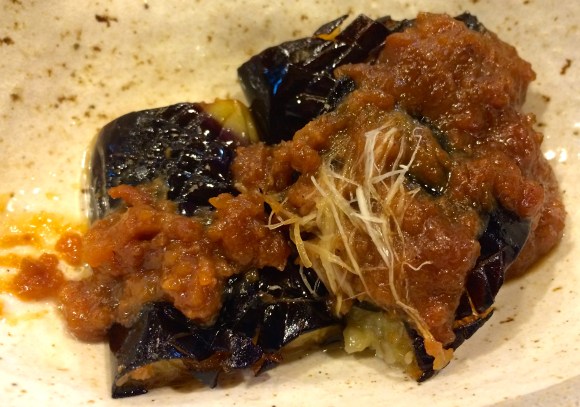
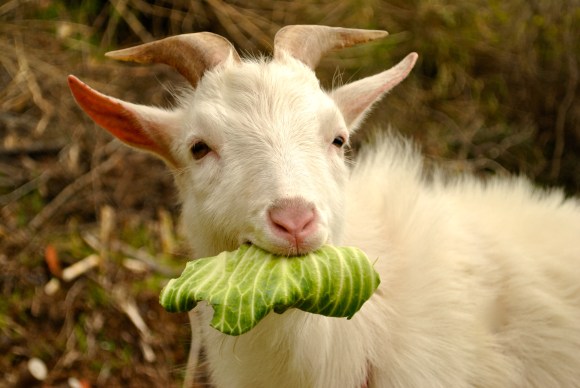
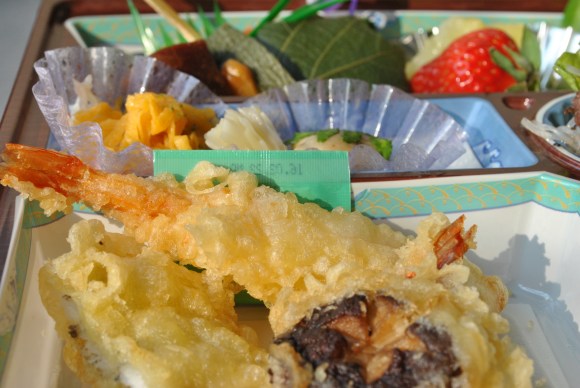
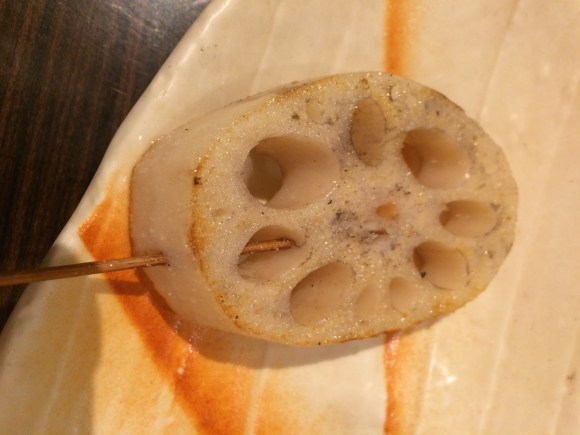
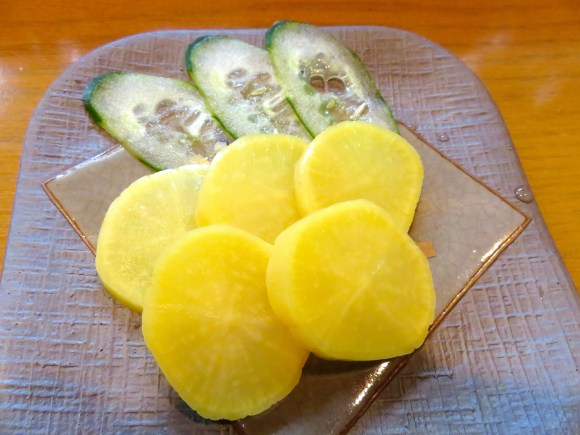
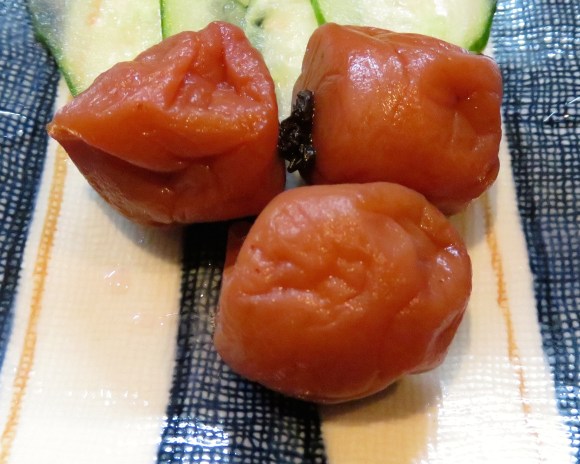



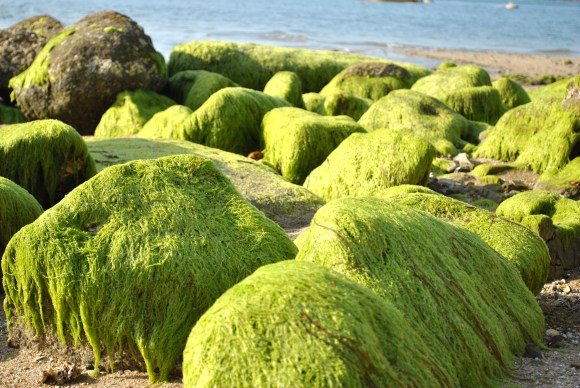
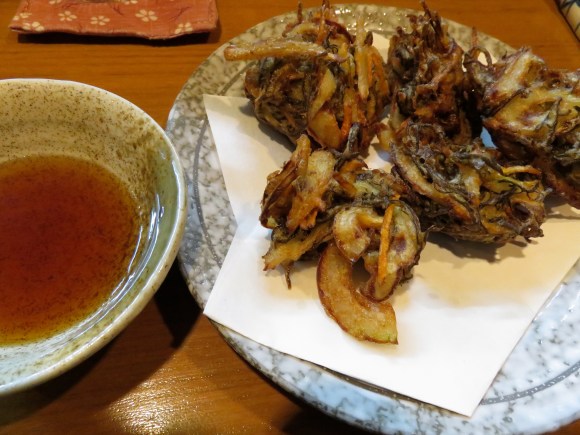
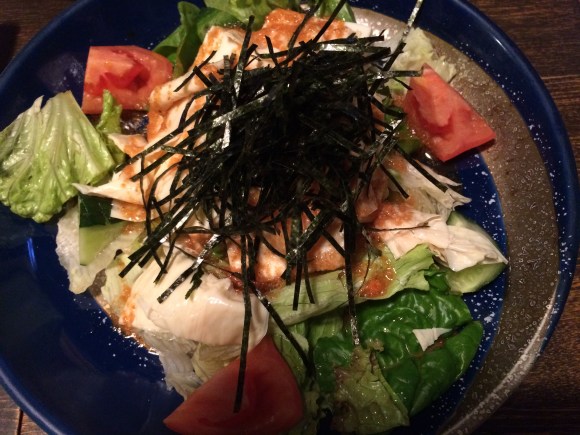
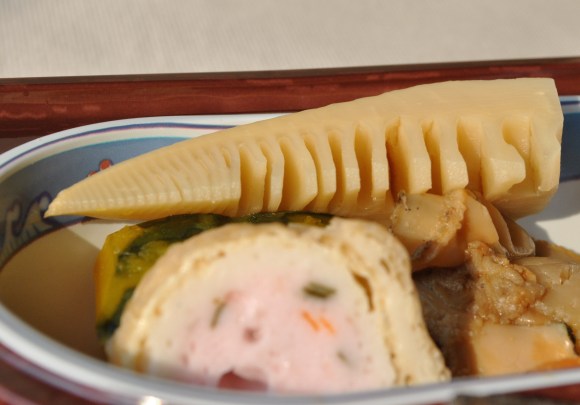
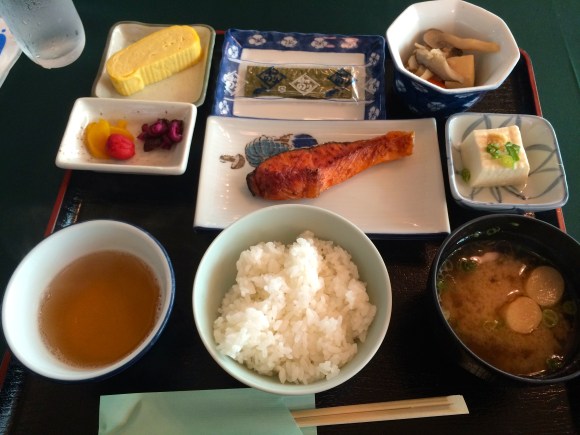
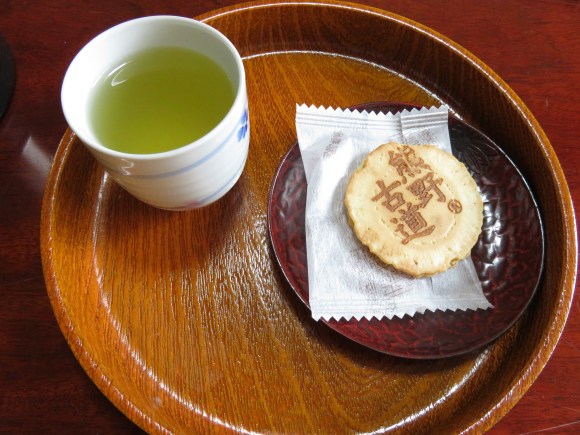
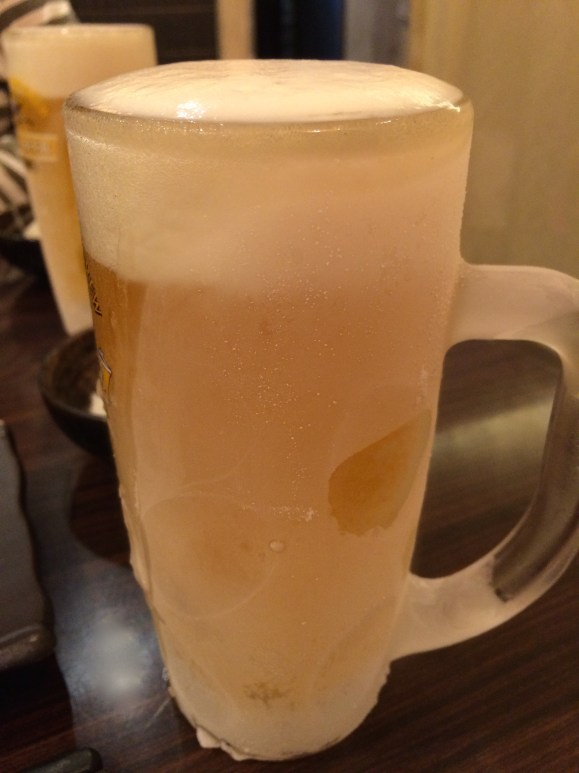
 Can a plant-based restaurant serving Buddhist meals turn meat-loving Mr. Sato into a vegetarian?
Can a plant-based restaurant serving Buddhist meals turn meat-loving Mr. Sato into a vegetarian? Around Japan in 47 rice balls: Mr. Sato buys each prefecture’s musubi all from one Tokyo shop
Around Japan in 47 rice balls: Mr. Sato buys each prefecture’s musubi all from one Tokyo shop What’s really for breakfast? 20 Japanese people give us a peek at their morning meal【Photos】
What’s really for breakfast? 20 Japanese people give us a peek at their morning meal【Photos】 Karan Koron Shokudo proves meat-free doesn’t mean taste-free【Veg’n in Tokyo】
Karan Koron Shokudo proves meat-free doesn’t mean taste-free【Veg’n in Tokyo】 We visit Tokyo’s new all-plant-based cafe “Komeda Is □”
We visit Tokyo’s new all-plant-based cafe “Komeda Is □” Seaside scenery, history, and so many desserts on Yokohama’s Akai Kutsu【Japan Loop Buses】
Seaside scenery, history, and so many desserts on Yokohama’s Akai Kutsu【Japan Loop Buses】 Sandwiches fit for a sumo served up in Osaka【Taste Test】
Sandwiches fit for a sumo served up in Osaka【Taste Test】 Foreigner’s request for help in Tokyo makes us sad for the state of society
Foreigner’s request for help in Tokyo makes us sad for the state of society Japanese ramen restaurants under pressure from new yen banknotes
Japanese ramen restaurants under pressure from new yen banknotes Japan’s summertime towelket pillowcases are even better with the addition of Ghibli stars【Photos】
Japan’s summertime towelket pillowcases are even better with the addition of Ghibli stars【Photos】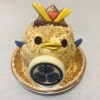 Samurai chick pudding cake is Japan’s newest hard-to-buy, delicious-to-eat treat【Taste test】
Samurai chick pudding cake is Japan’s newest hard-to-buy, delicious-to-eat treat【Taste test】 No talking allowed, at all, at new Tokyo cafe, even when you’re ordering【Videos】
No talking allowed, at all, at new Tokyo cafe, even when you’re ordering【Videos】 Mikado Coffee is a 76-year-old coffee chain with a major celebrity connection
Mikado Coffee is a 76-year-old coffee chain with a major celebrity connection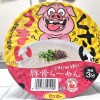 Does Japan’s “Stinky but Tasty” tonkotsu ramen live up to its name?
Does Japan’s “Stinky but Tasty” tonkotsu ramen live up to its name? Stay at a Japanese capsule hotel in Tokyo for less than US$20 a night
Stay at a Japanese capsule hotel in Tokyo for less than US$20 a night McDonald’s new Happy Meals offer up cute and practical Sanrio lifestyle goods
McDonald’s new Happy Meals offer up cute and practical Sanrio lifestyle goods French Fries Bread in Tokyo’s Shibuya becomes a hit on social media
French Fries Bread in Tokyo’s Shibuya becomes a hit on social media Studio Ghibli releases new action figures featuring Nausicaä of the Valley of the Wind characters
Studio Ghibli releases new action figures featuring Nausicaä of the Valley of the Wind characters Red light district sushi restaurant in Tokyo shows us just how wrong we were about it
Red light district sushi restaurant in Tokyo shows us just how wrong we were about it New private rooms on Tokaido Shinkansen change the way we travel from Tokyo to Kyoto
New private rooms on Tokaido Shinkansen change the way we travel from Tokyo to Kyoto Tokyo Tsukiji fish market site to be redeveloped with 50,000-seat stadium, hotel, shopping center
Tokyo Tsukiji fish market site to be redeveloped with 50,000-seat stadium, hotel, shopping center Beautiful Ghibli sealing wax kits let you create accessories and elegant letter decorations【Pics】
Beautiful Ghibli sealing wax kits let you create accessories and elegant letter decorations【Pics】 Japanese city loses residents’ personal data, which was on paper being transported on a windy day
Japanese city loses residents’ personal data, which was on paper being transported on a windy day Studio Ghibli releases Kiki’s Delivery Service chocolate cake pouches in Japan
Studio Ghibli releases Kiki’s Delivery Service chocolate cake pouches in Japan New definition of “Japanese whiskey” goes into effect to prevent fakes from fooling overseas buyers
New definition of “Japanese whiskey” goes into effect to prevent fakes from fooling overseas buyers Our Japanese reporter visits Costco in the U.S., finds super American and very Japanese things
Our Japanese reporter visits Costco in the U.S., finds super American and very Japanese things All-you-can-drink Starbucks and amazing views part of Tokyo’s new 170 meter-high sky lounge
All-you-can-drink Starbucks and amazing views part of Tokyo’s new 170 meter-high sky lounge More foreign tourists than ever before in history visited Japan last month
More foreign tourists than ever before in history visited Japan last month New Pokémon cakes let you eat your way through Pikachu and all the Eevee evolutions
New Pokémon cakes let you eat your way through Pikachu and all the Eevee evolutions Disney princesses get official manga makeovers for Manga Princess Cafe opening in Tokyo
Disney princesses get official manga makeovers for Manga Princess Cafe opening in Tokyo Sales of Japan’s most convenient train ticket/shopping payment cards suspended indefinitely
Sales of Japan’s most convenient train ticket/shopping payment cards suspended indefinitely Sold-out Studio Ghibli desktop humidifiers are back so Totoro can help you through the dry season
Sold-out Studio Ghibli desktop humidifiers are back so Totoro can help you through the dry season Japanese government to make first change to romanization spelling rules since the 1950s
Japanese government to make first change to romanization spelling rules since the 1950s Ghibli founders Toshio Suzuki and Hayao Miyazaki contribute to Japanese whisky Totoro label design
Ghibli founders Toshio Suzuki and Hayao Miyazaki contribute to Japanese whisky Totoro label design Doraemon found buried at sea as scene from 1993 anime becomes real life【Photos】
Doraemon found buried at sea as scene from 1993 anime becomes real life【Photos】 Tokyo’s most famous Starbucks is closed
Tokyo’s most famous Starbucks is closed One Piece characters’ nationalities revealed, but fans have mixed opinions
One Piece characters’ nationalities revealed, but fans have mixed opinions We asked a Uniqlo employee what four things we should buy and their suggestions didn’t disappoint
We asked a Uniqlo employee what four things we should buy and their suggestions didn’t disappoint Princesses, fruits, and blacksmiths: Study reveals the 30 most unusual family names in Japan
Princesses, fruits, and blacksmiths: Study reveals the 30 most unusual family names in Japan Can you guess the most-consumed vegetable in Japan? This survey reveals the results
Can you guess the most-consumed vegetable in Japan? This survey reveals the results Celebrate New Years in Pokémon style — with a monster ball filled with traditional osechi food!
Celebrate New Years in Pokémon style — with a monster ball filled with traditional osechi food! Vegetables are smarter than fruits: Three high IQ Japanese veggies
Vegetables are smarter than fruits: Three high IQ Japanese veggies Cup of noodles for vegans! Japanese Zen Buddhist temple starts selling instant soba and udon
Cup of noodles for vegans! Japanese Zen Buddhist temple starts selling instant soba and udon Onikun: Epic onigiri so big they’re half demon, half rice ball
Onikun: Epic onigiri so big they’re half demon, half rice ball We make an easy, cheap variation of an Eel Kabayaki Bowl that’s also vegetarian!【SoraKitchen】
We make an easy, cheap variation of an Eel Kabayaki Bowl that’s also vegetarian!【SoraKitchen】 Fisherman’s izakaya serves up awesome fresh seafood in Tokyo
Fisherman’s izakaya serves up awesome fresh seafood in Tokyo Grated radish art from Japan brings the cute to your favourite dishes
Grated radish art from Japan brings the cute to your favourite dishes Grated white radish cat spices up traditional Japanese home cooking
Grated white radish cat spices up traditional Japanese home cooking Japan’s biggest curry chain now offers a true vegetarian curry
Japan’s biggest curry chain now offers a true vegetarian curry Should you warm up your convenience store onigiri rice balls in the microwave?【Taste test】
Should you warm up your convenience store onigiri rice balls in the microwave?【Taste test】 A meatless beef bowl? We try a plant-based meal at Sukiya in Taiwan
A meatless beef bowl? We try a plant-based meal at Sukiya in Taiwan CoCo Ichi hamburger steak curry for vegetarians? Taste-testing the meatless option in Taiwan
CoCo Ichi hamburger steak curry for vegetarians? Taste-testing the meatless option in Taiwan Top 10 food disasters prepared by Japanese wives who have extraordinary talent in the kitchen
Top 10 food disasters prepared by Japanese wives who have extraordinary talent in the kitchen Vegetarian ramen in Tokyo? Not only is it available, it’s apparently pretty great too!
Vegetarian ramen in Tokyo? Not only is it available, it’s apparently pretty great too! Seaweed and soy beans and mushrooms, oh my! New Japanese-style bagels coming soon
Seaweed and soy beans and mushrooms, oh my! New Japanese-style bagels coming soon
Leave a Reply